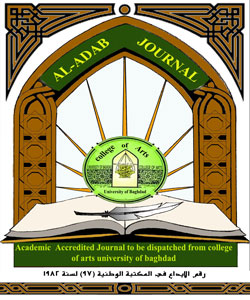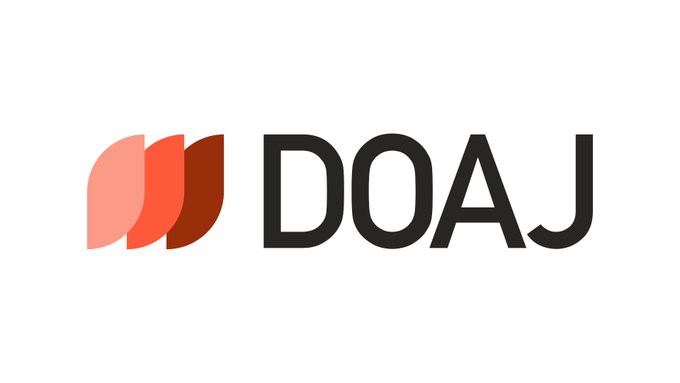حب التقاط صور السيلفي وعلاقته ببعض سمات الشخصية لدى طلبة الجامعة
DOI:
https://doi.org/10.31973/aj.v1i142.1837الكلمات المفتاحية:
حب التقاط صور السيلفي، سمات الشخصية، النرجسية، البحث عن الانتباه، السلوك المتمركز حول الذات، الوحدة النفسية، طلبة الجامعةالملخص
استهدفت الدراسة الحالية معرفة مستوى حب التقاط صور السيلفي لدى طلبة جامعة بغداد، وقياسه على وفق متغير الجنس. وايجاد العلاقة بين حب التقاط صور السيلفي وبعض سمات الشخصية (النرجسية، الوحدة النفسية، سلوك البحث عن الانتباه، وسلوك التمركز حول الذات)
واختيرت عينة عشوائية مكونة من(135) طالب وطالبة بواقع(64) ذكورو(71) اناث، وتم تبني وترجمة واستعمال مقياس حب التقاط صور السيلفي Selfie- liking scale ومقاييس سمات الشخصية المتمثلة بالنرجسية، وسلوك البحث عن الانتباه، ومقياس السلوك المتمركز حول الذات، ومقياس الوحدة النفسية، الذي تم اعدادها من قبل (Charoensukmongkol,2016)، يتألف مقياس حب التقاط صور السيلفي من(6) فقرات، ومقياس النرجسية من(8) فقرات، والاستجابة على وفق تدرج خماسي يتراوح ما بين (اتفق تماما(5)- لا اتفق تماما(1))، اما مقياس الوحدة النفسية فيتكون من(6) فقرات، ومقياس البحث عن الانتباه (4) فقرات، ومقياس سلوك التمركز حول الذات(5) فقرات، والاستجابة على وفق تدرج خماسي يتراوح ما بين(دائما(5)- ابدا(1))، وتوصلت النتائج الى حب التقاط صور السيلفي هو عال لدى عينة البحث، وانه هناك فروق ذات دلالة في حب التقاط صور السيلفي، يعزى الى متغير الجنس، ولصالح الاناث، والتوصل الى وجود علاقة ارتباطية بين حب التقاط صور السيلفي وسمات الشخصية المحددة في الدراسة، وبعد اجراء تحليل الانحدار بين متغيرات الدراسة تبين ان لسمة الشخصية النرجسية والسلوك المتمركز حول الذات الاسهام الاكبر في حب التقاط صور السيلفي لدى طلبة جامعة بغداد
التنزيلات
المراجع
الشربيني، لطفي.(2001). موسوعة شرح المصطمحات النفسية انجليزي- عربي، دار النهضة العربية للطباعة والنشر، بيروت.
عثمان، طارق.(2017).أكثر من صورة الدوافع النفسية للسيلفي، اوراق نماء(147)، مركز نماء للبحوث والدراسات،1-15. تم استردادها من https://www.academia.edu/31748989/.
عبد الخالق، احمد محمد(1987). الابعاد الاساسية للشخصية.ط4، دار المعرفة ، الاسكندرية، مصر.
Aerni, M. (2014). The passionate ‘sharing’ of creative women: A Study of self-portrayal on Facebook and Instagram. (Masters Thesis, Stockholm University).Retrieved from http://www.divaportal.org/smash/get/diva2:724725/FULLTEXT01.pdf
Angstman, K. B., & Rasmussen, N. H. (2011). Personality disorders: Review and clinical application in daily practice. American Family Physician, 8, 1253–1260.
Arpaci, Ibrahim.(2018). The moderating effect of gender in the relationship between narcissism and selfie-posting behavior, Personality and Individual Differences. 134 ,71–74
Balakrishnan, J.,& Griffiths,MD(2018). An Exploratory Study of “Selfitis” and the Development of the Selfitis Behavior Scale. International Journal of Mental Health and Addiction, 16,722-736.
Baumeister Roy F., Hutten, Debra G. (1987). Self-presentation theory: self-construction and audience pleasing. In Goethals, George and Mullen, Brian (ed.) theories of group behavior. New york: springer –Verlag Inc. pp. 71-87.
Borkenau, P., Brecke, S., Möttig, C., & Paelecke, M. (2009). Extraversion is accurately perceived after a 50-ms exposure to a face. Journal of Research in Personality, 43(4), 703-706.
Charoensukmongkol, Peerayuth. (2016). Exploring personal characteristics associated with selfie-liking. Cyberpsychology. 10(2).1-13.
El-Sherbiny, Lotfi (2001), Encyclopedia of Explaining Arabic Psychological Terms, Dar Al-Nahda Al-Arabiya for Printing and Publishing, Beirut.
Flaherty, G. T., & Choi, J. (2016). The ‘selfie’phenomenon: reducing the risk of harm while using smartphones during international travel. Journal of Travel Medicine, 23(2), 1–3.
Fox, J., & Rooney, M. C. (2015). The Dark Triad and trait self objectification as predictors of men’s use and self- presentation behaviors on social networking sites. Personality and Individual Differences, 76, 161-165.
Gabriel, Fleur. (2014). Sexting, Selfies and Self-Harm: Young People, Social Media and the Performance of Self-Development. Media International Australia incorporating Culture and Policy. 151. 104-112.
Halpern, D., Valenzuela, S., & Katz, J. E. (2016). “Selfie-ists” or “Narci-selfiers”?: A cross-lagged panel analysis of selfie taking and narcissism. Personality and Individual Differences, 97, 98–101.
Hess, A. (2015). Selfies| the selfie assemblage. International Journal of Communication, 9, 1629–1646.
Kaur, Sukhdeep & Maheshwari, Dr S K & Preksha, Dr. (2018). Narcissistic Personality and Selfie Taking Behavior among College Students. International Journal of medical and health research. 3. 56-60.
Kwon, Y. J. & Kwon, K. N. (2011). Self in Selca, Self-Portrait Photography, as a Model, Photographer, And Consumer. Building Connections, 39, 660-661.
Ma, J. W., Yang, Y., & Wilson, J. A. (2017). A window to the ideal self: a study of UK Twitter and Chinese Sina Weibo selfie-takers and the implications for marketers. Journal of Business Research, 74, 139–142.
Moon, J. H., Lee, E., Lee, J. A., Choi, T. R., & Sung, Y. (2016). The role of narcissism in self-promotion on Instagram. Personality and Individual Differences, 101, 22–25.
Naumann, L. P., Vazire, S., Rentfrow, P. J., & Gosling, S. D. (2009). Personality judgments based on physical appearance. Personality and Social Psychology Bulletin, 35(12), 1661-1671
Nestler, S., Egloff, B., Küfner, A. C., & Back, M. D. (2012). An integrative lens model approach to bias and accuracy in human inferences: Hindsight effects and knowledge updating in personality judgments. Journal of personality and social psychology, 103(4), 689-717.
Nesvadba, Noé(2017) The presentation of self in the digital world: Goffman and the study of women’s self portrayal on istagram through selfies, A Master’s Dissertation Submitted in partial fulfillment of the requirements for the award of M.A in Digital Media and Society, Loughborough University, Retrieved from https://www.academia.edu/36582334/
Qiu, L., Lu, J., Yang, S., Qu, W., & Zhu, T. (2015). What does your selfie say about you? Computers in Human Behavior, 52, 443–449.
Roberts, J., & Koliska, M. (2017). Comparing the use of space in selfies on Chinese Weibo and Twitter. Global Media and China, 2(2), 1–16.
Sorokowski, P., Sorokowska, A., Oleszkiewicz, A., Frackowiak, T., Huk, A., & Pisanski, K. (2015). Selfie posting behaviors are associated with narcissism among men. Personality and Individual Differences, 85, 123–127.
Steinfield, C., Ellison, N. B., & Lampe, C. (2008). Social capital, self-esteem, and use of online social network sites: A longitudinal analysis. Journal of Applied Developmental Psychology, 29, 434–445.
Swihart,JD., Polack,C., Gilbert, E., Essa,I. (2017). Selfie-Presentation in Everyday Life: A Large-Scale Characterization of Selfie Contexts on Instagram, Proceedings of the Eleventh International AAAI Conference on Web and Social Media,42-51
Tandoc, E. C., Jr., Ferrucci, P., & Duffy, M. (2015). Facebook use, envy, and depression among college students: Is facebooking depressing? Computers in Human Behavior, 43, 139–146.
Vazire, S., Naumann, L. P., Rentfrow, P. J., & Gosling, S. D. (2008). Portrait of a narcissist: Manifestations of narcissism in physical appearance. Journal of Research in Personality, 42(6), 1439-1447.
Weiser, E. B. (2015). Me: Narcissism and its facets as predictors of selfie-posting frequency. Personality and Individual Differences, 86, 477–481.
Weiten & Margaret (1994) Psychology Applied Modern Life, Cole PUBLISHING Company Pacific Grove, California.
التنزيلات
منشور
إصدار
القسم
الرخصة
:حقوق الطبع والنشر والترخيص
بالنسبة لجميع البحوث المنشورة في مجلة الآداب، يحتفظ الباحثون بحقوق النشر. يتم ترخيص البحوث بموجب ترخيص Creative Commons CC BY 4.0 المفتوح ، مما يعني أنه يجوز لأي شخص تنزيل البحث وقراءته مجانًا. بالإضافة إلى ذلك ، يجوز إعادة استخدام البحث واقتباسه شريطة أن يتم الاستشهاد المصدر المنشور الأصلي. تتيح هذه الشروط الاستخدام الأقصى لعمل الباحث وعرضه.
:إعادة إنتاج البحوث المنشورة من الناشرين الآخرين
من الضروري للغاية أن يحصل الباحثون على إذن لإعادة إنتاج أي بحث منشورة (أشكال أو مخططات أو جداول أو أي مقتطفات من نص) لا يدخل في نطاق الملكية العامة أو لا يملكون حقوق نشرها. يجب أن يطلب الباحثون إذنًا من مؤلف حقوق النشر (عادة ما يكون الناشر).
يطلب الإذن في الحالات التالية:
بحوثك الخاصة المنشورة من قِبل ناشرين آخرين ولم تحتفظ بحقوق النشر الخاصة بها.
مقتطفات كبيرة من بحوث أي شخص أو سلسلة من البحوث المنشورة.
استخدم الجداول والرسوم البيانية والمخططات والمخططات والأعمال الفنية إذا لم يتم التعديل عليها.
الصور الفوتوغرافية التي لا تملك حقوق لنشرها.
لا يطلب الإذن في الحالات التالية:
إعادة بناء الجدول الخاص بك مع البيانات المنشورة بالفعل في مكان آخر. يرجى ملاحظة أنه في هذه الحالة يجب عليك ذكر مصدر البيانات في شكل "بيانات من ..." أو "مقتبس من ...".
تعتبر عروض الأسعار القصيرة معقولة الاستخدام العادل ، وبالتالي لا تتطلب إذنًا.
الرسوم البيانية ، الرسوم البيانية ، المخططات ، الأعمال الفنية التي أعاد الباحث رسمها بالكامل والتي تم تغييرها بشكل ملحوظ إلى درجة لا تتطلب الاعتراف.
الحصول على إذن
لتجنب التأخير غير الضروري في عملية النشر ، يجب أن تبدأ في الحصول على أذونات في أقرب وقت ممكن. لا يمكن لمجلة الآداب نشر بحث مقتبس من منشورات أخرى دون إذن.
قد يمنحك مالك حقوق الطبع والنشر تعليمات بشأن شكل الإقرار الواجب اتباعه لتوثيق عمله ؛ بخلاف ذلك ، اتبع النمط: "مستنسخ بإذن من [المؤلف] ، [كتاب / المجلة] ؛ نشره [الناشر] ، [السنة]." في نهاية شرح الجدول ، الشكل أو المخطط.
.jpg)
























